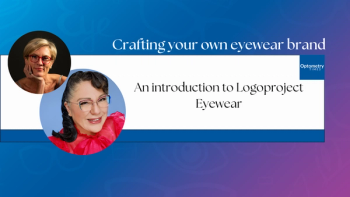
How vision can help diagnose concussions
Sports-related concussions can now be diagnosed on the sidelines using a two-minute vision-based test, according to a recent study published in The Journal or Neuro-Ophthalmology.
Stock image above is © Aspen Photo / Shutterstock.com. The University of Maine and corresponding sports team and players depicted are not directly associated with this article or the content therein.
New York City-Sports-related concussions can now be diagnosed on the sidelines using a two-minute vision-based test, according to a
King-Devick test
In recent years, athletic trainers working with athletes in sports such as boxing and martial arts have supplemented the
Related:
“For decades, optometrists have used the King-Devick test to aid in the diagnosis of ocular motor dysfunction and a need for vision therapy,” says Marc Taub, OD, MS, FAAO, FCOVD, chief of vision therapy and rehabilitation and supervisor of the residency program in pediatrics and vision therapy at Southern College of Optometry. “It is reliable and easy to perform in patients of any age or cognitive ability.
“I personally use this test in my standard binocular vision assessment,” he says. “There are three test plate plates, which increase in difficulty in a step-wise manner. This helps me determine exactly how much difficulty in the patient is having with his eye movements.”
The study
Researchers at
To do this, researchers recruited 243 young athletes between the ages of 5 and 18 and 89 college athletes, all of whom played hockey or lacrosse.
The athletes underwent preseason baseline assessments using:
• King-Devick test
• SAC
• Timed tandem gait test of balance
Related:
The SAC and timed tandem gait are components of the currently used
The results
According to the study, among the 12 athletes who sustained concussions during their athletic season, King-Devick scores worsened from baseline by an average of 5.2 seconds. The vision-based King-Devick test showed the greatest capacity to distinguish concussed vs. control athletes based on changes from preseason baseline to post-injury.
“Adding a vision-based performance measure to cognitive and balance testing enhances the detection capabilities of current sideline concussion assessment,” the study’s authors write. “This observation in patients with mild traumatic brain injury reflects the common involvement and widespread distribution of brain pathways dedicated to vision."
Related:
A
“While the test is standardized in terms of the time to complete each test plate, proper observation by the test taker is crucial in picking up other signs of the concussion,” he says. “Working with an optometrist who routinely uses this test and can perform vision therapy to rehabilitate the concussed athlete is a key aspect of the treatment process.”
Newsletter
Want more insights like this? Subscribe to Optometry Times and get clinical pearls and practice tips delivered straight to your inbox.













































.png)


